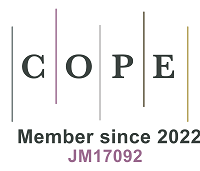
Topic: Human Exposure to Trace Organic Contaminants in Asia
A Special Topic of Journal of Environmental Exposure Assessment
ISSN 2771-5949 (Online)
Submission deadline: 31 Dec 2022
Guest Editors
Dr. Suwanna Kitpati Boontanon
Department of Civil and Environmental Engineering, Faculty of Engineering, Mahidol University, Nakhon Pathom, Thailand.
Dr. Kraichat Tantrakarnapa
Department of Social and Environmental Medicine, Faculty of Tropical Medicine, Mahidol University, Bangkok, Thailand.
Special Topic Introduction
Many trace organic contaminants have been associated with adverse effects on human health and the environment. Industrialization and urbanization have magnified the problems of trace organic contaminants in environmental matrices (water, land, soil, air, etc.). Knowledge of fate, transport, environmental pathways, exposure mechanisms, and health effects of exposure to trace organic contaminants is lacking, especially in Asia.
This Special Issue of Journal of Environmental Exposure Assessment will address human exposure to trace organic contaminants in Asia to fill important knowledge gaps in this area. Topics of interest for this Special Issue include (but are not limited to):
● Targeted analysis and non-targeted screening of trace organic contaminants
● Biomonitoring and environmental monitoring of trace organic contaminants
● Experimental or modeling-based assessment of human exposure to trace organic contaminants
● Environmental impacts of trace organic contaminants in the environment
● Determination of exposure pathways
● Bioavailability and bioaccessibility of trace organic contaminants
● Associations between environmental exposure and health outcomes
● Health effects of trace organic contaminants and the underlying mechanisms
Trace organic contaminants of interest for this Special Issue include (but are not limited to):
● Persistent organic pollutants (POPs): Per- and polyfluoroalkyl substances (PFAS), Perfluorooctanoic acid (PFOA), Perfluorooctane sulfonate (PFOS); Brominated flame retardants: Polybrominated diphenyl ethers (PBDEs), Hexabromocyclododecane (HBCDD), and Tetrabromobisphenol A (TBBPA), etc.; Organophosphate flame retardants (OPFRs); Dioxins and dioxin-like compounds, Polychlorinated biphenyls (PCBs)
● Pharmaceuticals and personal care products (PPCPs): antibiotics, endogenous hormones, and synthetic steroids
● Polycyclic aromatic hydrocarbons (PAHs)
● Phthalate esters (PEs) and alternative plasticizers
● Volatile organic compounds (VOCs)
● UV filter compounds
Experimental papers, epidemiological papers, up-to-date review articles, systematic reviews, meta-analyses, as well as commentaries are all welcome.
This Special Issue of Journal of Environmental Exposure Assessment will address human exposure to trace organic contaminants in Asia to fill important knowledge gaps in this area. Topics of interest for this Special Issue include (but are not limited to):
● Targeted analysis and non-targeted screening of trace organic contaminants
● Biomonitoring and environmental monitoring of trace organic contaminants
● Experimental or modeling-based assessment of human exposure to trace organic contaminants
● Environmental impacts of trace organic contaminants in the environment
● Determination of exposure pathways
● Bioavailability and bioaccessibility of trace organic contaminants
● Associations between environmental exposure and health outcomes
● Health effects of trace organic contaminants and the underlying mechanisms
Trace organic contaminants of interest for this Special Issue include (but are not limited to):
● Persistent organic pollutants (POPs): Per- and polyfluoroalkyl substances (PFAS), Perfluorooctanoic acid (PFOA), Perfluorooctane sulfonate (PFOS); Brominated flame retardants: Polybrominated diphenyl ethers (PBDEs), Hexabromocyclododecane (HBCDD), and Tetrabromobisphenol A (TBBPA), etc.; Organophosphate flame retardants (OPFRs); Dioxins and dioxin-like compounds, Polychlorinated biphenyls (PCBs)
● Pharmaceuticals and personal care products (PPCPs): antibiotics, endogenous hormones, and synthetic steroids
● Polycyclic aromatic hydrocarbons (PAHs)
● Phthalate esters (PEs) and alternative plasticizers
● Volatile organic compounds (VOCs)
● UV filter compounds
Experimental papers, epidemiological papers, up-to-date review articles, systematic reviews, meta-analyses, as well as commentaries are all welcome.
Submission Deadline
31 Dec 2022
Submission Information
For Author Instructions, please refer to https://www.oaepublish.com/jeea/author_instructions
For Online Submission, please login at https://www.oaecenter.com/login?JournalId=jeea&IssueId=jeea2212311040
Submission Deadline: 31 Dec 2022
Contacts: Zoe Zhang, Managing Editor, [email protected]








